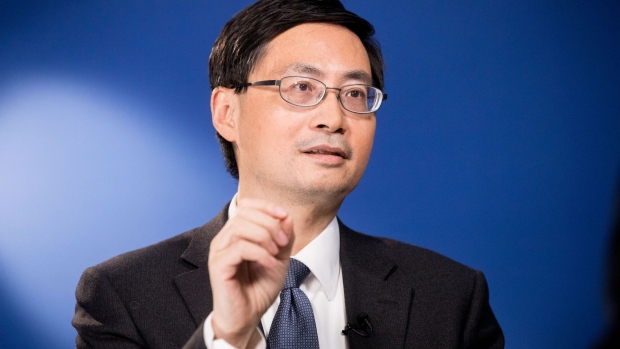Mar 30, 2023
China’s Green Debt Pioneer Says Transition Market Is Even Bigger
, Bloomberg News

(Bloomberg) -- A new kind of environmentally focused investment — known as transition finance — is poised for a boom in China that will dwarf its 25 trillion yuan ($3.6 trillion) green debt market.
That’s the prediction of Ma Jun, a former member of the monetary policy committee at the People’s Bank of China who drafted the country’s first green finance guidelines in 2015.
“The pure green sector is probably only 10% of GDP currently, the non-green sector theoretically is 90% of GDP,” Ma said in an interview. He is now president of the Hong Kong Green Finance Association. “The potential for transition finance is bigger, and transition finance activities will grow faster than traditional green finance.”
Transition finance refers to investments — such as bonds or loans — designed to help heavy-emitting industries like steel and cement become more energy efficient and reduce their greenhouse gas emissions. It’s different from green investment, which is supposed to fund only low-carbon projects like renewable power.
Transition bond issuance in Asia more than doubled in value last year compared with 2021, according to BloombergNEF. In China, regulators are working to define “transition” activities that will be available to coal-fired power, construction and other heavy industries. China, the world’s biggest polluter, has set goals to peak emissions by 2030 and be carbon neutral by 2060.
“Other countries may say, let the market define it,” Ma said. “But in China, the central bank will lead the definition. This definition is important, it prevents transition-washing.”
Such concerns have already derailed transition finance in Europe, which has been world-leading in developing standards for green finance.
But governments in Asia, which accounts for half of the world’s greenhouse gas emissions, are still pushing for the label to unlock sustainable funding for heavy-emitters to decarbonize. Japan plans to raise as much as $154 billion in sovereign transition bonds over the next decade, adding to a flood of corporate deals. And Southeast Asian states this week released an updated version of a taxonomy that includes transition activities such as the phasing out of coal assets.
Green finance “hasn’t focused on helping carbon-intensive sectors to decarbonize, and these sectors are actually much bigger than the pure green industries,” Ma said.
The International Monetary Fund said in its global financial stability report last year that “transition taxonomies,” which determine whether and how assets are aligned with emission-reduction goals, can help emerging market issuers send a clear signal of climate benefits to private investors.
Read more: China’s Murky $300 Billion Bond Market Holds Climate Change Key
China’s transition finance framework will be “a huge catalyst for market growth,” Ma said. Transition finance will likely follow similar dynamics as green finance where, once a taxonomy has been released, products will grow very quickly.
Already, transition finance has seen “major interest” from many local governments and financial institutions, Ma said.
Local governments are keen to use transition finance to upgrade carbon-intensive industries and infrastructure to boost their economies. Ma warned that transition finance is too “complex” to be used as a short-term stimulus measure, and some carbon-intensive businesses will have to disappear.
For financial institutions, the vehicle provides an opportunity to create and sell new products such as transition loans and bonds, as well as sustainability-linked equity financing and insurance products, Ma said.
--With assistance from Alfred Cang, Greg Ritchie and Miquel Kishimoto Guardiola.
(Updates with Asia taxonomy in eighth paragraph)
©2023 Bloomberg L.P.






